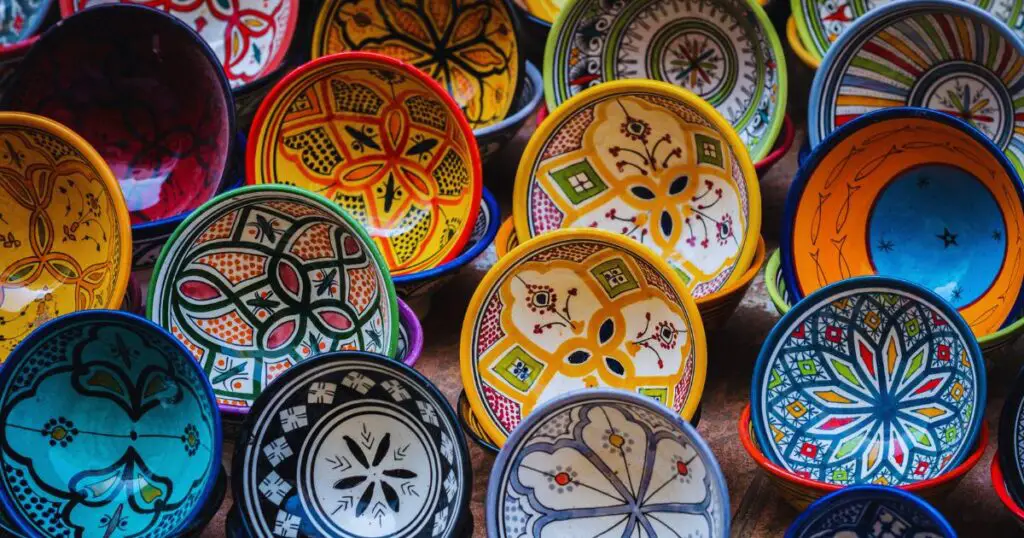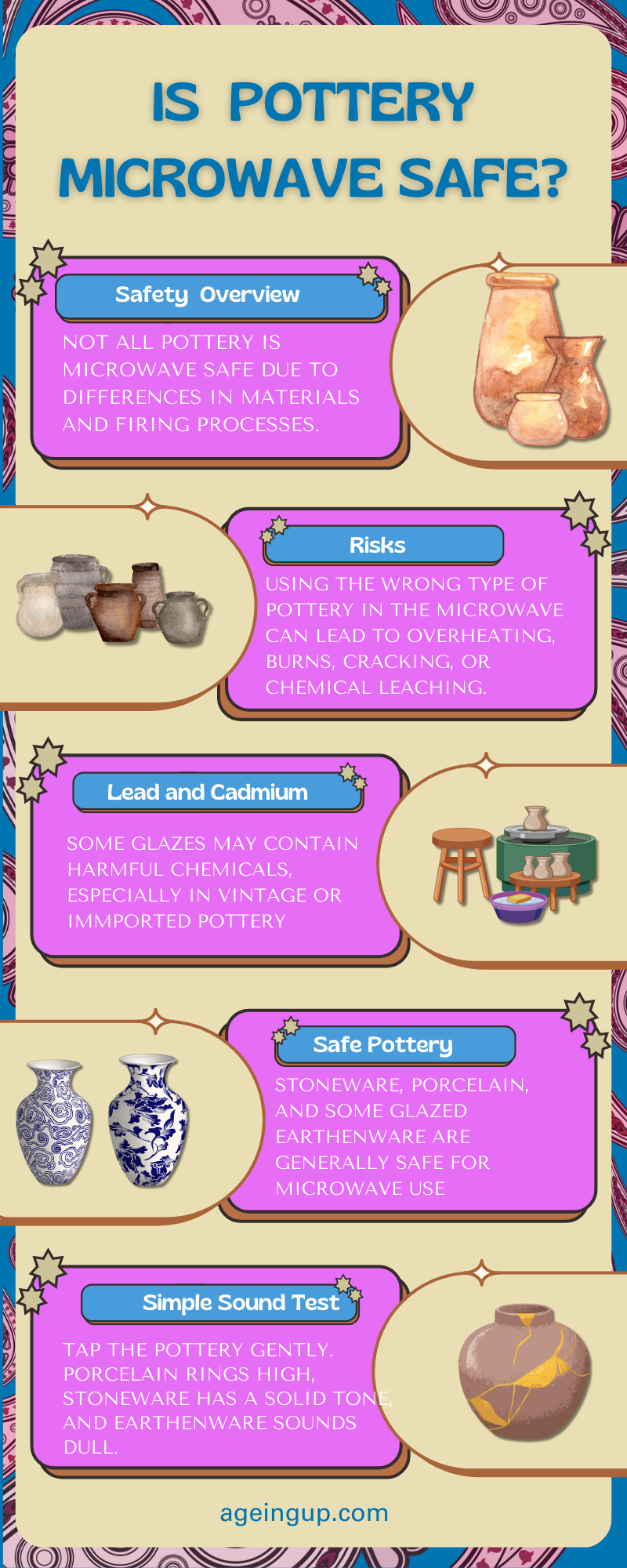As an Amazon affiliate, I may earn from qualifying purchases. Please read our Disclaimer and Privacy Policy.
The answer to the question, “Is pottery microwave safe?” isn’t black and white. The truth is that it depends on the type of pottery used and the way in which it was fired.
In this post, I’ll explain which ones are safe and which are not.
Unfortunately, putting the wrong type of pottery in the microwave could result in overheating, resulting in a serious burn risk.
It could also lead to cracking or breaking, especially if your pottery has small air pockets, imperfections, or low-quality glazes.
In fact, some pottery (although rare) uses glazes that may contain lead, cadmium, or other harmful substances.
Heating it in a microwave could cause the chemicals to leech into your drink or food.
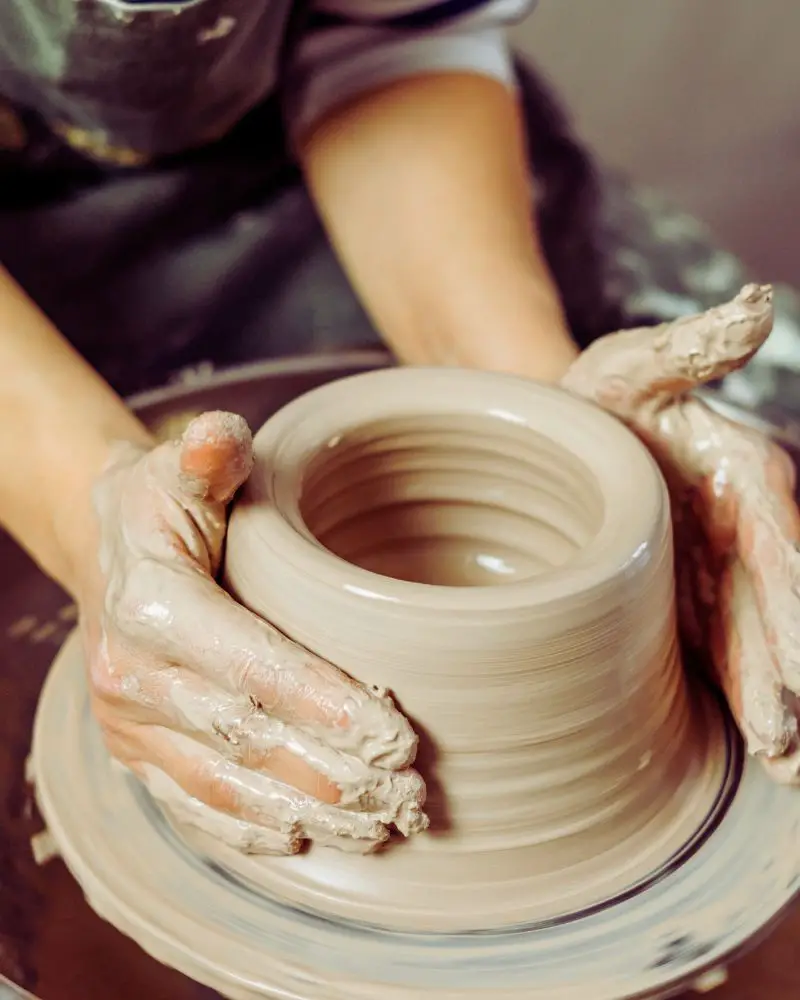
Is Handmade Pottery Microwave Safe?
Handmade pottery, like the mugs and bowls you might create in a workshop can add charm to your kitchen. The creative process of working with pottery is a great hobby with all the benefits that hobbies bring.
However, not all handmade pieces are safe for drinking, heating, or daily use. Here’s what you need to know.
Risks of Drinking or Eating From Handmade Pottery
While handmade pottery is beautiful and unique, certain factors can make it unsafe.
There are, of course, strict regulations in place within Canada, the United States, and the European Union. These regulations were designed to ensure that glazes used in pottery are lead-free and non-toxic.
Unfortunately, there is still the potential for someone to create a piece of pottery, such as a mug, with a toxic glaze.
The reason has to do with non-compliant pottery makers, imported pottery, vintage and antique pottery, improper firing, and lack of certification.
Tiny cracks in the glaze, known as crazing, can trap bacteria or moisture which makes it unsafe to drink from.
In addition, if the clay wasn’t fired to a high enough temperture, the pottery can remain porous. If it’s porous, it’s absorbing liquids. This makes it a breeding ground for mold or bacteria.
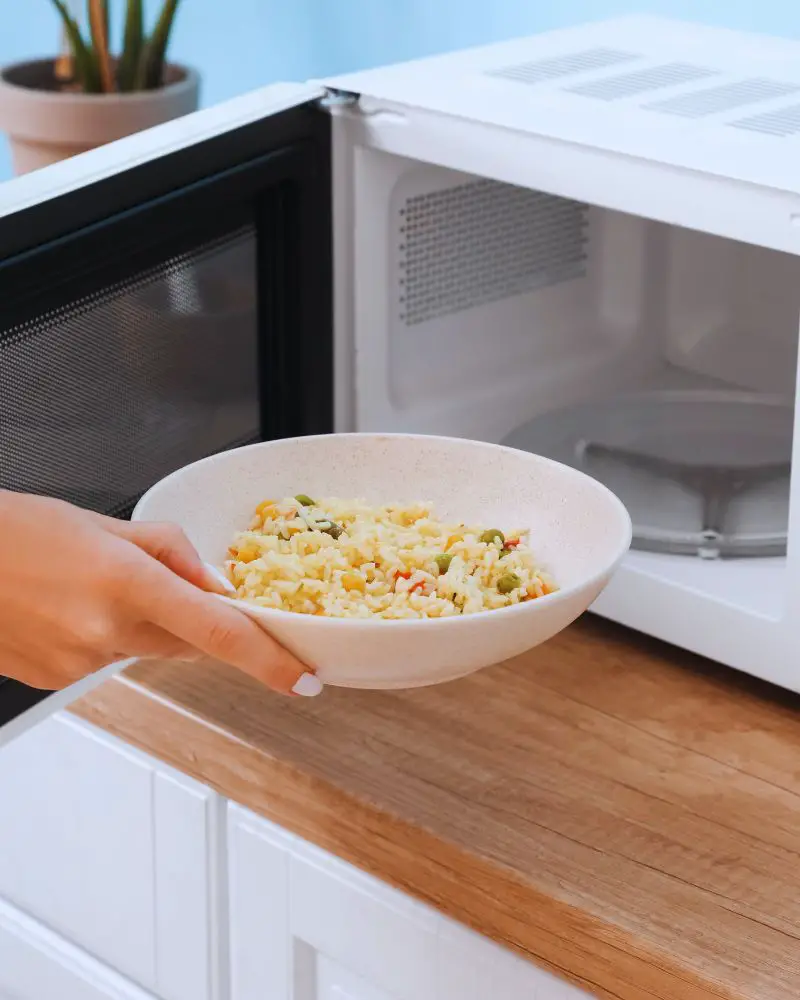
How to Stay Safe
When you asked the question, “Is pottery microwave safe?” you likely didn’t realize the Pandora’s box the question would open. The reality is, microwave safety is only one part of the equation.
There’s a good chance that if you’re putting pottery into the microwave, it’s because there is food on a plate you want to eat from, or liquid in a mug you’d like to drink.
The issues we need to look at here include how safe it is to drink from certain ceramic materials, including whether it’s safe to microwave pottery.
Here are some ways to ensure your safety before using pottery as dishware:
Ask the Maker
If you’re purchasing handmade pottery, ask the potter if they use lead-free glazes and if the piece is food-safe.
Look for Labels
Check for labels or marks indicating that the pottery is certified safe for food use, especially for pieces like mugs or plates.
Research Imported or Vintage Pottery
If you’re buying from abroad or an antique shop, be cautious and avoid using unmarked vintage pottery for food or drink until it’s tested for lead.
Testing
You can send a piece to a lab for testing or buy home lead-testing kits if you suspect a piece of pottery might contain lead.
By staying informed and cautious, you can avoid the potential risks of using pottery with toxic glazes.
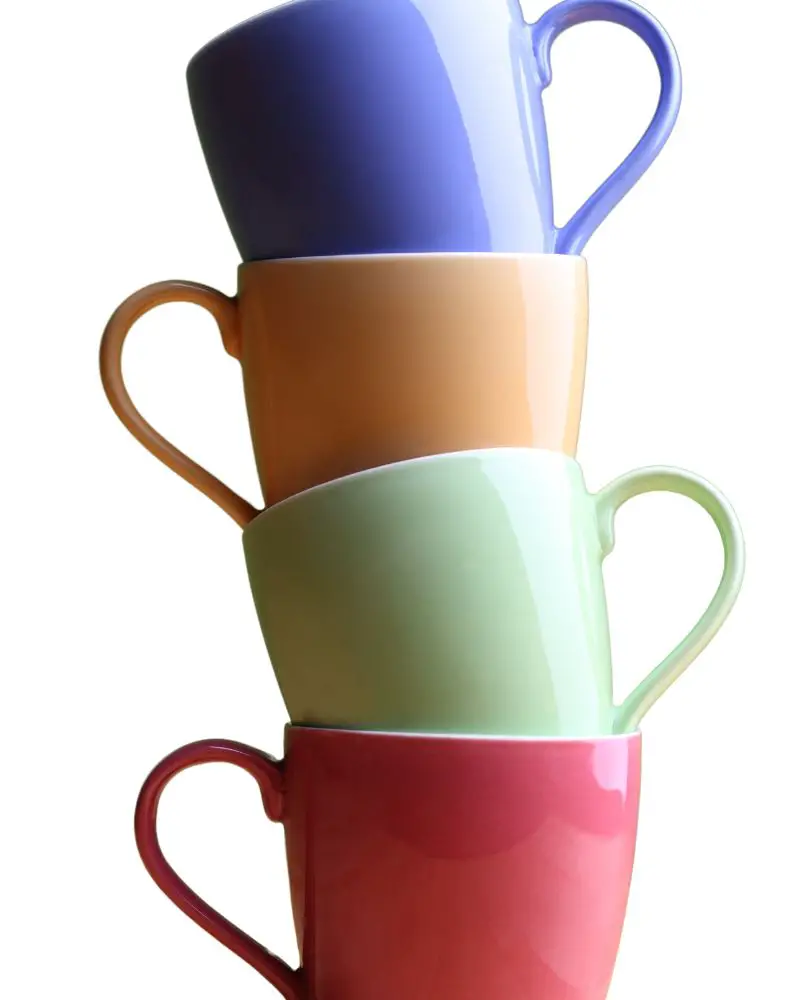
What Does “Microwave Safe” Really Mean?
A microwave-safe ceramic piece can be heated in a microwave without absorbing excess heat, cracking, sparking, or leaching harmful substances into food or drink.
For a ceramic piece to be microwave-safe, it must be made from dense, vitrified clay (like stoneware or porcelain) and covered with a properly fired, food-safe glaze that does not contain metallic elements.
Ceramics that are porous, unevenly fired, or contain metals in the glaze are not suitable for microwave use and may overheat, crack, or cause damage to the microwave.
How Microwaves Heat Pottery And Why It Matters
Microwave ovens heat food by emitting radio waves that excite water molecules in the food or liquid, causing them to vibrate and generate heat.
If a ceramic piece is not microwave-safe, it can heat unevenly because of moisture trapped in the clay or glaze.
This leads to thermal shock, which is a rapid change in temperature that causes the piece to crack or shatter.
Here’s Why You Shouldn’t Put Metallics in The Microwave!
Metallic glazes can reflect microwave energy, creating sparks or damaging the microwave itself.
Issues caused by metallics in the microwave can include the following:
- Sparks and arcing
- Overheating (burn risk)
- Uneven heating
- Damage to the microwave
- Cracking or breaking
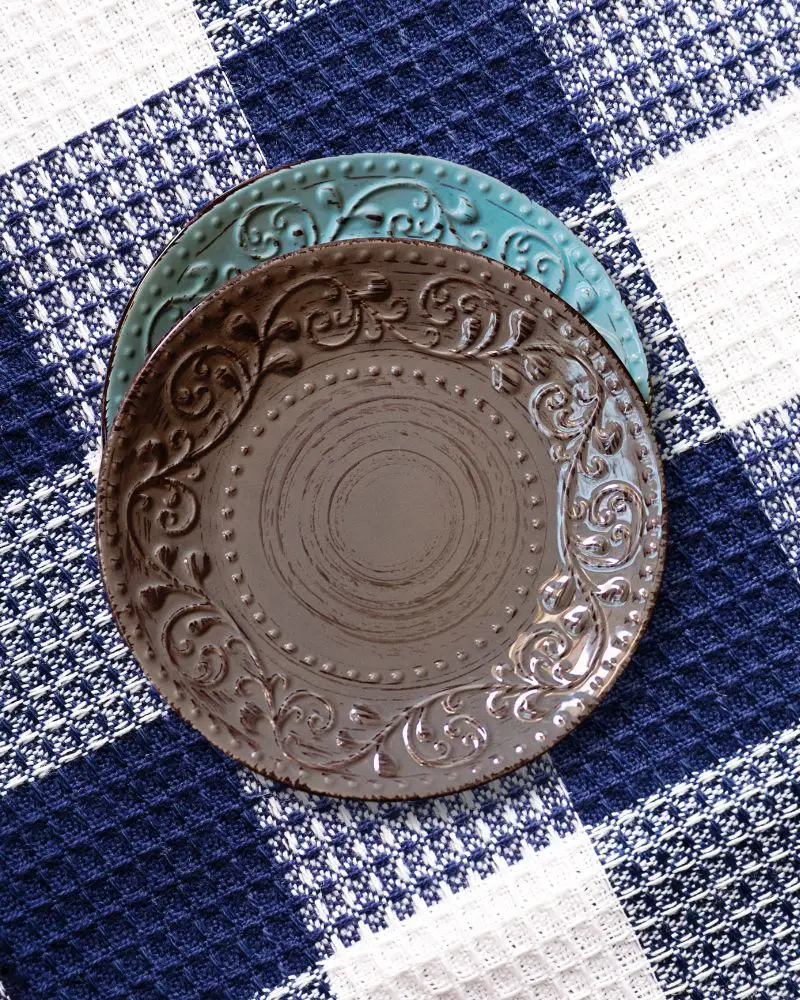
How to Tell What Kind of Pottery You Have
Identifying the type of pottery you have and what it’s made from can be tricky. However, there are several clues to help someone determine the material and composition of their piece.
The following are a few ways you can visually examine your pottery to determine the finish.
Porcelain
Porcelain is typically smooth, white, and thin. It has a fine, glass-like finish when glazed. When help up to the light, thin porcelain pieces are often translucent.
Stoneware Clay
Stoneware is denser, heavier, and less refined than porcelain. It has a smooth surface but may feel slightly textured or “earthy,” giving it a more rustic, tactile quality.
Glazed stoneware can come in various colors, but it’s less likely to be translucent, and typically has a solid, durable feel. Stoneware is ideal for everyday use due to its strength and functionality.
Earthenware Clay
Earthenware pottery feels coarser and more porous, with a thicker, “chunkier” appearance. It often has a rustic base in shades of red, orange, or tan, which is common in terracotta pieces. Although earthenware tends to be heavier, it’s not as strong or durable as stoneware or porcelain, making it more suitable for decorative items or low-heat applications.
Red Stoneware
Red stoneware is a durable, earthy clay with a distinct reddish-brown color, often ranging from deep terracotta to lighter orange tones.
It has a slightly rough or grainy texture, especially when unglazed, and feels heavier and thicker than porcelain. When glazed, it can have a smooth or glossy finish, but still retains its rustic, tactile quality.
Red stoneware is commonly used for handmade pottery like mugs, bowls, and plates.
Perform a Sound Test
Tap the pottery gently with your finger or a wooden utensil:
The sound a piece of pottery makes when tapped can help identify its type.
Porcelain produces a high-pitched, ringing sound due to its dense, glass-like nature.
Stoneware, being less refined, gives off a lower-pitched, solid tone.
In contrast, earthenware makes a duller, more muted sound because it is porous and less dense. These variations in sound are a result of the different properties and textures of each type of clay.
Consider the Weight
When considering the weight of pottery to determine its material, porcelain is typically lightweight compared to its size, making it feel delicate and fine.
Stoneware is heavier and sturdier, giving it a solid, durable feel.
On the other hand, earthenware tends to be heavier as well, but it is less durable and more prone to damage than stoneware, making it feel substantial but less robust.
These weight differences are key indicators in identifying the type of pottery.
Look for Signs of Glazing
A shiny, matte, or glossy finish on pottery typically indicates that the piece has been glazed. The glaze not only enhances the appearance but also helps protect the pottery from stains and moisture.
Most pottery pieces, except for porcelain, are left unglazed at the bottom.
This exposes the clay body and can offer clues about the type of material used. An unglazed bottom can give you insight into the firing process and the pottery’s durability.
If you suspect the pottery is earthenware, perform a simple test by sprinkling a little water on the unglazed bottom. If the water soaks in quickly, it’s likely that the piece is porous and made from earthenware.
This is because earthenware is more absorbent than other types of clay, such as stoneware or porcelain.
More Hobby Info Please!
Hey there hobbyists, I’ve created a library of posts related to the art of pottery making. Check them out!
Cool Pottery Ideas for Beginner to Advanced Potters
How to Tell if Pottery is Valuable: A Beginner Guide
7 Vital Pottery Studio Supplies, Equipment, and Tools
Pottery Making as a Hobby!
I’ve been writing a lot of blog posts related to hobbies, particularly hobbies for couples over 50. If you’re interested in reading more, check out these recent posts:
23 Ultimate Hobbies for People Over 50 to Enjoy
69 Best Mind-Stimulating Hobbies for Men Over 60
19 Easy and Fun Hobbies for Couples Over 50
How to Turn a Hobby Into a Side Hustle
Is Pottery Microwave Safe? 5 Easy Ways to Check
To check the quality and safety of handmade or unknown pottery, try the following while keeping safety in mind.
1. Microwave Test
Place the pottery in the microwave with a cup of water. Heat for 30–60 seconds. If the pottery piece stays cool while the water heats, it’s likely microwave-safe and non-porous. If it gets hot, the clay or glaze may absorb moisture.
2. Water Test
Place a small amount of water on the unglazed bottom. If the water absorbs, it’s likely earthenware or improperly fired pottery.
By using these visual, tactile, and practical methods, someone can make a good guess about what type of pottery they have. For valuable or antique pieces, consulting a pottery expert or appraiser is a great option for confirmation.
3. Check for the “Microwave-Safe” Label
The best way to determine if your pottery is microwave-safe is to look for a clear “microwave-safe” label.
Many ceramic plates and ceramic mugs come with this label, indicating that they can safely be used in a microwave without the risk of cracking or leaching harmful substances.
If your piece doesn’t have the label, it’s always a good idea to ask the maker, especially if it’s handmade pottery. Porcelain clay and bone china are often microwave-safe when properly glazed, but handmade pieces may not always meet these standards.
4. Examine the Glaze
Another important factor to consider is the glaze used on the pottery.
Pottery with a metallic glaze is not safe for microwave use, as it can reflect microwave energy, causing sparks or damage to both the pottery and the microwave.
Additionally, certain glazes may not be fired to a high enough temperature to make them microwave-safe.
Ceramic cookware with a glossy or matte finish, when made from non-metallic glazes, is generally safe, but always verify its suitability before using it in the microwave.
Ensure that any glazed ceramics are free from lead or cadmium and are intended for food use.
5. Perform a Simple Touch Test
One of the easiest ways to test if your pottery can withstand higher temperatures is the touch test.
After microwaving, carefully touch the pottery with your hand. If it feels hotter than the food or has absorbed excessive heat, it likely means that the pottery is either porous or made from a material that isn’t designed to handle the heat.
On the other hand, microwave-safe containers should remain relatively cool while the food inside heats. This is because materials like stoneware or porcelain are dense and less likely to absorb moisture, making them ideal for microwave use.
By following these five easy checks—using the microwave test, water test, looking for labels, checking the glaze, and performing the touch test—you can safely determine whether your pottery is microwave-safe.
It’s always essential to consider the proper care and maintenance of your handmade ceramics to avoid any risks of damage or contamination, especially when dealing with acidic food or lower temperatures.
Always be cautious with vintage or imported pottery, as it may not meet modern standards for microwave safety.
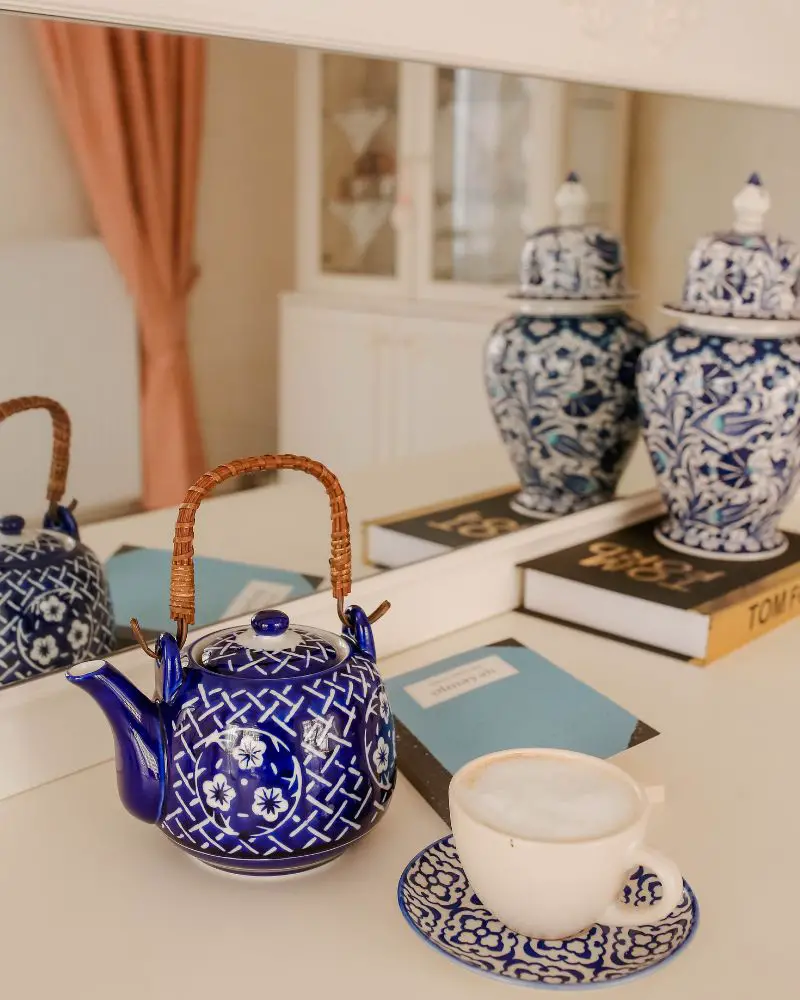
Summary – Is Pottery Microwave Safe?
Determining whether your pottery is safe to use in the microwave oven doesn’t have to be complicated.
By using a simple way to test your pottery, such as checking for a microwave-safe label or performing the water and touch tests, you can ensure that your ceramic dishes are safe to use.
While modern ceramics are often designed with microwave safety in mind, handmade ceramic items may require extra caution due to variations in the firing process or glaze.
Always remember that certain materials or improperly tested pottery can pose a safety hazard, so it’s important to stay informed and take the necessary precautions.
With these checks, you can enjoy your ceramics without worry and make the most of their beauty and functionality.

